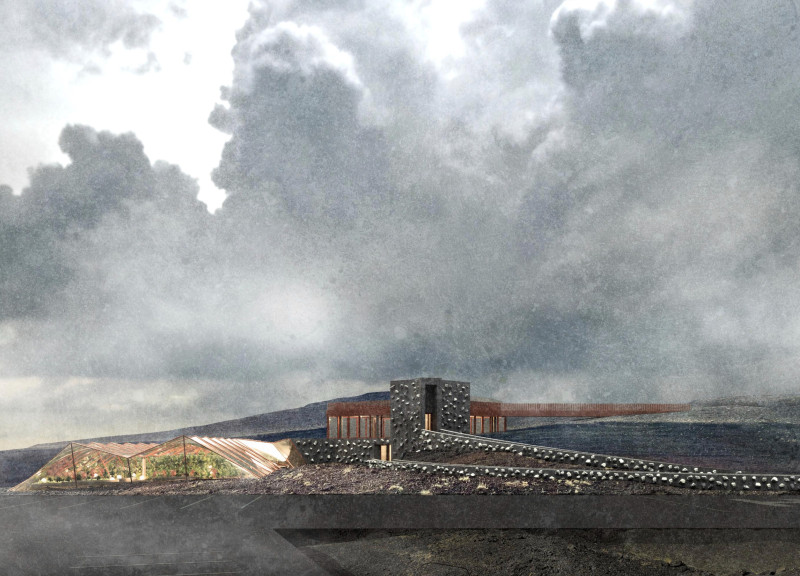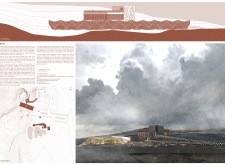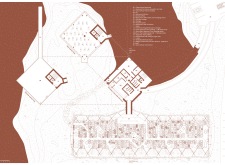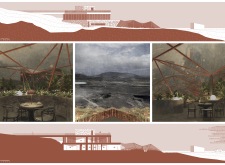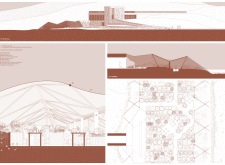5 key facts about this project
The architectural layout facilitates fluid movement between spaces, enhancing the overall visitor experience. The largest volume serves as the dining area, featuring expansive glazing that provides views of the surrounding landscape while maximizing natural light. The geometry of the design responds to the site’s topography and climate, creating an inviting atmosphere that melds indoor and outdoor experiences.
One of the key features of the project is the greenhouse component, which not only acts as a space for growing ingredients but also reinforces the restaurant's commitment to local sourcing. The greenhouse utilizes precision-engineered steel framing to allow for maximum transparency and interaction with the external environment. This connection encourages guests to appreciate the source of their food while integrating agriculture directly into the dining experience.
The thoughtful material palette employs reinforced concrete for structural integrity, glass for transparency, and wood for warmth. This combination fosters a sustainable approach, ensuring that the restaurant feels at one with its ecological surroundings. Insulation materials are also strategically used to regulate the internal climate, leveraging geothermal conditions to enhance energy efficiency.
What distinguishes this project from others is its innovative approach to environmental integration. The design incorporates passive climate control techniques, allowing the restaurant to operate efficiently without compromising comfort. The visual and physical connection between the dining spaces and the greenhouse creates a unique ambiance that differentiates Sprout from conventional restaurant designs.
The architecture of the Sprout project emphasizes a balance of functionality and aesthetic appeal, aligning effectively with its ecological context. The design promotes sustainability while offering a distinctive culinary experience rooted in its environment.
For more detailed information on the architectural plans, sections, designs, and concepts of the Sprout project, readers are encouraged to explore the full project presentation. Engaging with these elements provides a comprehensive understanding of the design's vision and execution.


